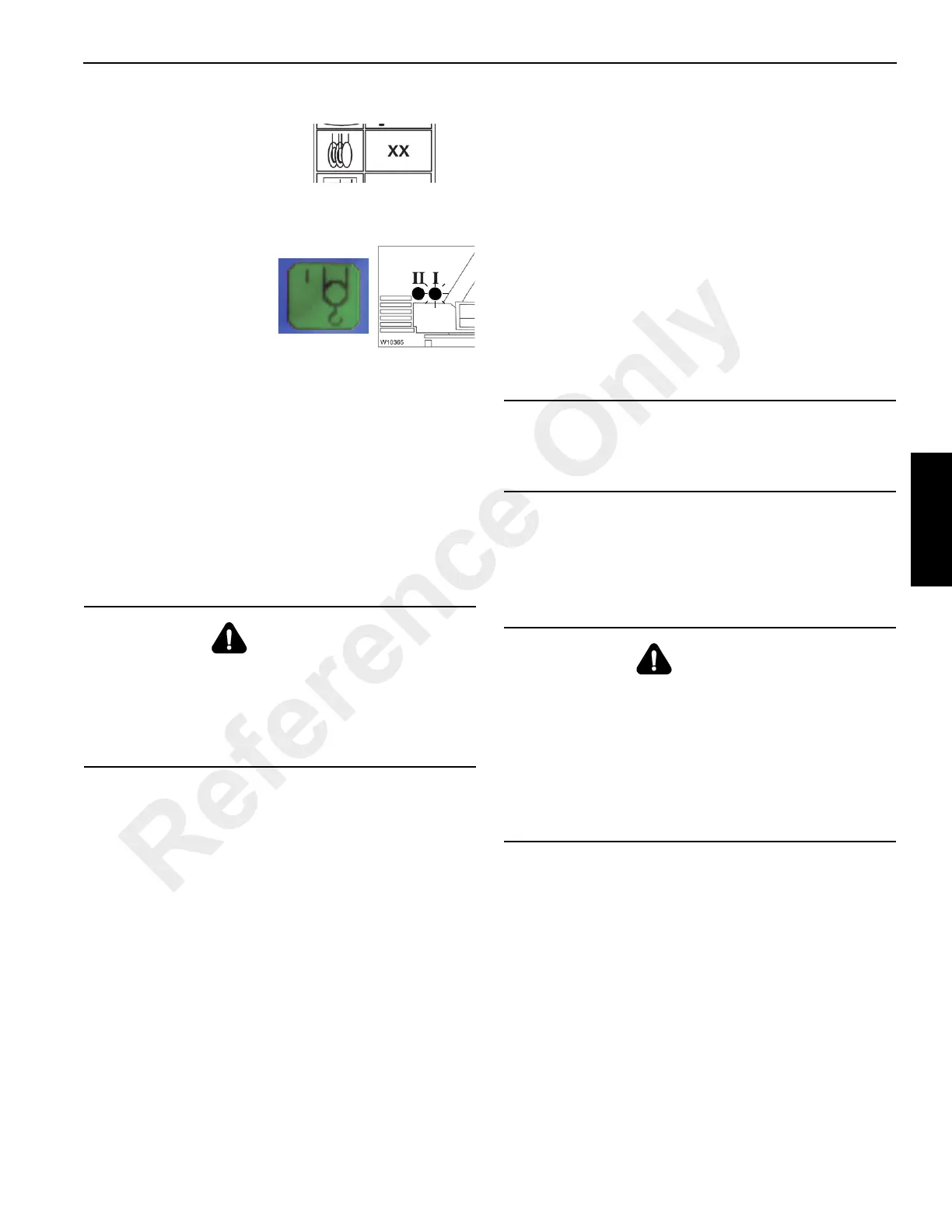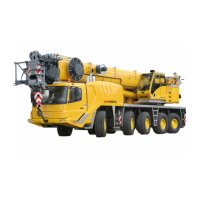3-159
RT9150E OPERATOR MANUAL OPERATING CONTROLS AND PROCEDURES
Published 2-23-2017, Control # 644-00
The RCL is now set for two-hook operation. It now takes into
account:
- The reeving for the auxiliary hoist
- The Load Chart for the boom extension.
Stowing and Parking
When parking, the crane should be left in the smallest, most
stable, valid operational configuration that the job site
practically allows, do the following:
1. Park the crane on a stable surface.
2. Remove the load from the hook.
3. Stow the swingaway boom extension, if erected.
4. Fully retract the boom and position it in the normal travel
position or at least as far as is practical to make the
crane as stable as possible, including, boom angle,
superstructure orientation, jib angle, etc. In high winds
the boom and jibs should be lowered or secured.
5. Engage the swing brake and/or swing lock pin.
6. Retract all jack cylinders and outrigger beams.
7. Apply the parking brake.
8. Put all operating controls in the neutral position.
9. Actuate the Crane Function switch.
10. Shut down the engine following the proper procedures
specified in this manual and the applicable engine
manual.
11. Remove the keys.
12. Disconnect batteries, if machine will be inactive for over
24 hours.
13. Close and lock all windows, covers, and doors.
Unattended Crane
The configuration in which the crane should be left while
unattended shall be determined by a qualified, designated
individual familiar with the job site, configuration, conditions,
and limitations.
7. In the reeving display,
enter the quantity of
reeved ropes of the
auxiliary hoist on the
boom extension.
8. Switch on the main hoist
by pressing its switch on
the right-hand controls.
The ECOS indicator
turns green. The
auxiliary hoist indicator
II remains on and the
main hoist indicator I
flashes.
9. Enter RCL code according to the Load Chart for the
actual rigging mode of the crane with the rigged boom
extension.
WARNING
Tipping Hazard!
Never park the crane near holes, or on rocky or extremely
soft surfaces. This may cause the crane to overturn.
Failure to comply with these instructions may cause death
or serious injury.
CAUTION
To avoid possible engine fault codes and undesirable
operation, ensure the keyswitch has been off 2 minutes
before disconnecting batteries.
DANGER
Tipping Hazard!
Changing weather conditions including but not limited to:
wind, ice accumulation, precipitation, flooding, lightning,
etc. should be considered when determining the location
and configuration of a crane when it is to be left
unattended.
Failure to comply with these instructions may cause death
or serious injury.
Reference Only

